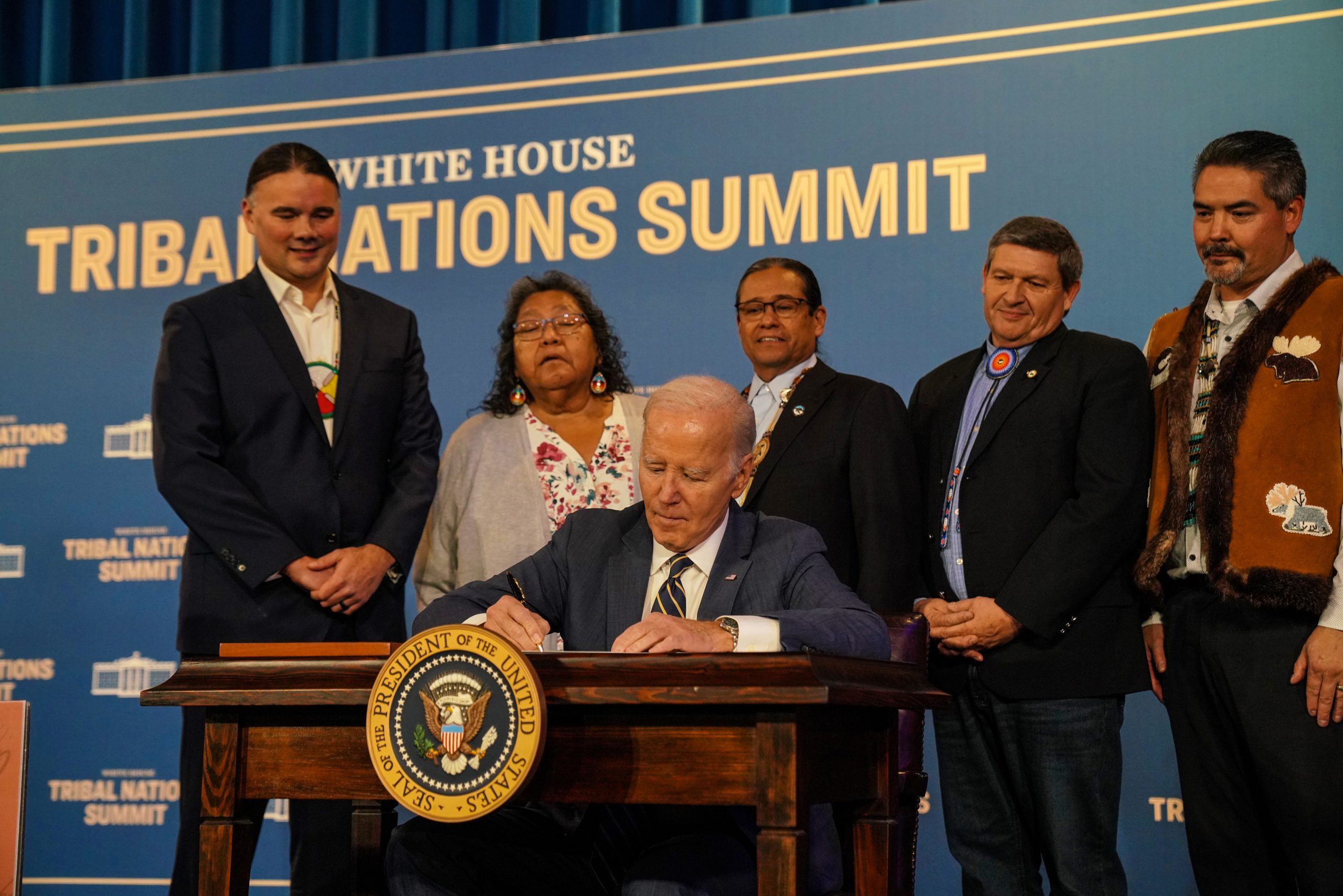Executive Order 14112 Reforming Federal Funding and Support for Tribal Nations to Better Embrace Our Trust Responsibilities and Promote the Next Era of Tribal Self-Determination

The nexus around Executive Order (EO) 14112, signed by President Biden on December 6, 2023, stems from the promises made by the Biden-Harris campaign in 2020 regarding Tribal self-determination, self-governance, and respecting the nation-to-nation relationship. The EO is a historic acknowledgment and has planted the seeds for federal actions to change the administration of federal funding and promote the next era of Tribal self-determination. We reviewed the last 10 years of Tribal consultation testimony from various federal agencies to identify the issues around federal funding. We understand the level of intensity that federal grant reporting has created for Tribal Nations and the burdensome grant funding requirements that have often far outweighed the benefits of funding. Tribes have shared how hard it is to keep up to date with reporting and how reporting detracts from implementing Tribal responses and services. We also believe that eliminating bureaucratic red tape is an issue that both sides of the aisle can agree on. This EO will create a clearer picture and justification to help policymakers understand holistically what Tribes need to provide critical government services.
From a federal government perspective, we want federal dollars to be used practically, meaningfully, and impactfully, recognizing that Tribal governments are sovereign and have their way of doing business. Tribes understand best how programs will work in their communities. Our focus now should be on how we restructure federal systems to work better for Indian Country, including less burdensome and more meaningful reporting, increased access to federal funding, and ongoing success with implementing programs. It is incredible to see the work that Tribes can do with limited resources. We’ve seen Tribal grantees leverage resources to spread every dollar for as much impact as possible. We want to remove barriers to Tribal administration of federal funding. We recognize the effort required to implement Tribal responses and programs. Tribes must deal with the generational impacts of federal policies and practices, including chronic underfunding in all areas.
The second part of the EO is an unprecedented task and will be challenging to achieve, but is long overdue—assessing the federal budget for Tribal Nations. The Office of Management and Budget (OMB) is creating a measuring tool or assessment guidance to help federal agencies identify the shortfall in funding that Tribes need, which is data we do not currently have. For example, if the Office on Violence Against Women (OVW) were to fund all 574 Tribal Nations fully, what would that amount be? Working closely with the team at OMB, that’s the type of analysis we expect federal agencies to achieve, and data we will collect with this assessment to understand better how much we’re falling short and help the administration plan for how to fulfill the federal trust responsibility as discussed over time by Tribes and most recently in the Broken Promises Report. The assessment guidance will probably require several iterations to nail down a methodology that reflects Tribal realities. Federal agencies will also conduct government-to-government consultations to assist with developing and implementing their assessments. This assessment is a much-needed step toward acknowledging the shortfalls and chronic underfunding of federal programs that Tribes rely on.
We’ve held several listening sessions and consultations with Tribes since the EO was signed, including on July 8. Each agency will have discretion about conducting its analysis and must conduct its own Tribal consultation on its processes. By May 2025, agencies must submit a report to the president on the shortfalls they’ve identified and potential ways to better meet them. We’ve seen several changes happen across the agencies over the past several months, including through monthly reporting, and we look forward to sharing these success stories in the short and long term, including at the next Tribal Nations Summit.
We’ve often heard from Tribes that there’s no way they would have been able to afford to apply for a specific grant program because of the cost-share requirements. We’ve also noted that when we can remove or limit cost-share requirements, more Tribes apply, which means the funding is getting where it is needed most. These are the types of challenges we are trying to tackle. We are also noticing improvements in reporting, including changes to reporting formats that used to be 30 pages and are now two pages or spending 15 hours on reporting versus 80 hours. We’re freeing up some of those human capital resources and hours. The ultimate goal is to get funding where needed most, impacting or funding the need versus the program’s administration. We are getting closer, but we know we have much work to do. This EO will have a lasting legacy for years to come.
To close, I wanted to recognize that my time at the National Indigenous Women’s Resource Center and the Tribes they work with opened my eyes to how dysfunctional the federal government can be in providing funding and allowing Tribes and organizations to do what they need to implement responses. The frustration I heard from grantees has been the same as that from Tribal leaders for decades. It opened my eyes to how much we need to do better and how we influence what happens on the ground. I’ve been to Tribal communities across the United States but working with folks on the ground differs from visiting a community. I think those are the lessons for federal officials to learn—break away and do something in communities impacted by the services we are funding. We need more of that. I am grateful for the experience. It certainly has shifted and shaped how I think about how the federal government works. My hope is that it translates through and beyond this executive order regarding policy and how our government does business and meets its trust responsibility.




